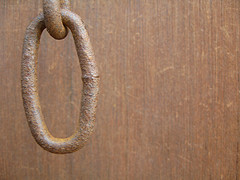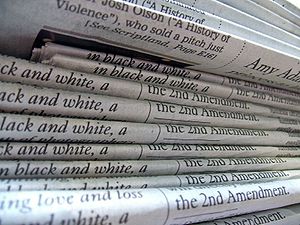 So the New York Post printed a story without crediting the blogger who originally broke it – and the journalist whose byline is on the Post piece claimed it was an editorial policy not to credit blogs for scoops.
So the New York Post printed a story without crediting the blogger who originally broke it – and the journalist whose byline is on the Post piece claimed it was an editorial policy not to credit blogs for scoops.
There’s been some controversy over this, with Zachary M. Seward at Nieman Journalism Lab saying “It’s hard, of course, to defend this rule on journalistic grounds”.
There’s a clear and obvious line between nicking someone’s words and rewriting their story – and individuals and organisations who fall on the wrong side of that line tend to get publicly and appropriately told off.
But news organisations routinely borrow or steal story ideas from each other. Newspaper ideas go back and forth, nationals write up local stories, local BBC newsrooms interview people in the evenings who were in that morning’s paper. It might not be nice, but it’s the way the traditional media world seems to work. It’s even happened to me.
Should it be the case online? Print journalists sometimes get very upset when online news outlets summarise their stories even with links – for example, see Ian Shapira‘s response to Gawker’s write-up of his Washington Post article.
Most papers, though, nick stuff and don’t bother to attribute it. Like the New York Post, they take an idea from somewhere and run with it, usually without crediting where that idea came from.
Sometimes it’s to get individual credit, sometimes to avoid looking slow, sometimes editorial policy, and sometimes – believe it or not – it’s because the journalist in question doesn’t know how to put links on their online stories.
At the moment, where I work, we can’t add inline links within stories. We can only add boxed links, which makes it very difficult to link specific content – I couldn’t link to more than two or three sources without confusing the issue. There’s no way of separating links by category or by subject, so internal and external links are lumped together.
This week at work I trained two people to add links to web stories using our current content management system. Before that, if they had found a story on the web they couldn’t have credited it in the way bloggers expect – they lacked the skills to do so. It takes up to three minutes to add a link – time that some people don’t have.
It’s hard to believe in a time when linking is considered potentially vital to paper’s survival, but for some papers and journalists technology and training – and the financial issues involved in acquiring them – are preventing them from following good web etiquette.
Journalists and bloggers can agree (not that they always do) that online sources ought to be clear and obvious, that raw data should be available wherever possible and that linksharing is both important and necessary.
But when the technology isn’t available, sometimes we fall down before we’ve even started.
